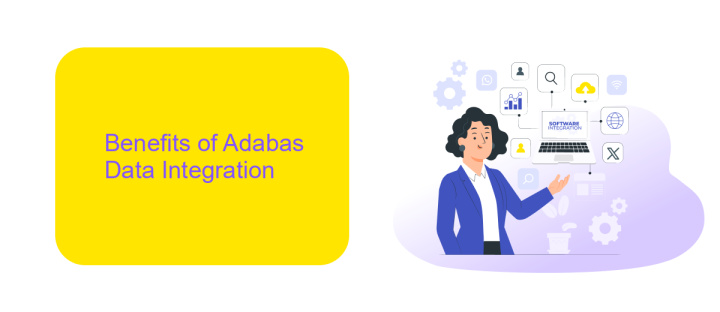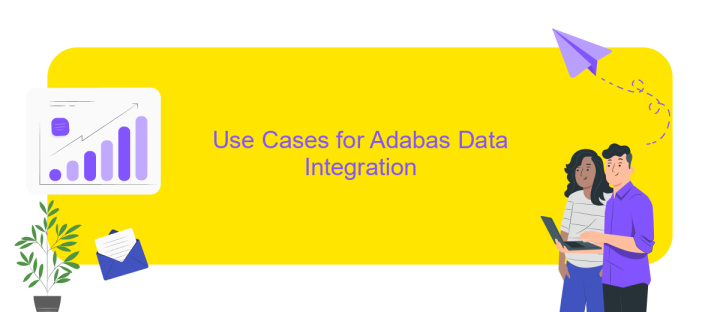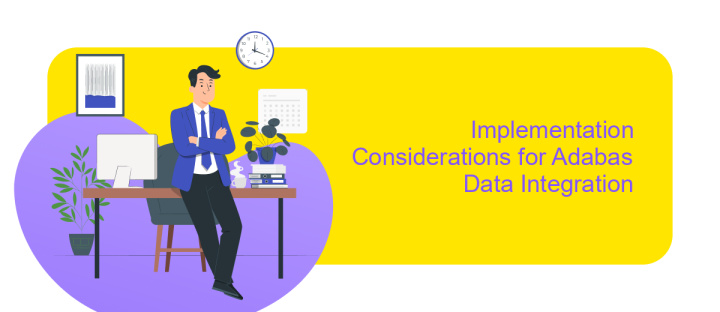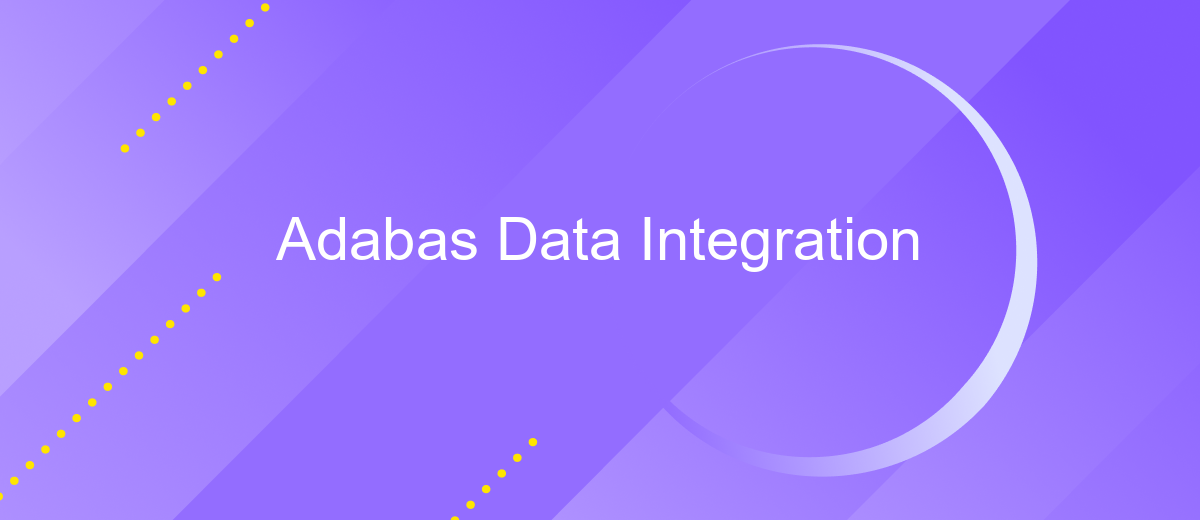Adabas Data Integration
Adabas Data Integration is a critical process for organizations looking to unify disparate data sources and streamline their operations. By leveraging Adabas, a high-performance database management system, businesses can ensure seamless data flow, enhance data accuracy, and improve decision-making processes. This article explores the key features, benefits, and best practices for integrating data using Adabas, helping enterprises achieve optimal efficiency and data-driven insights.
Introduction
Adabas Data Integration is a critical component for organizations seeking to harness the full potential of their data assets. By seamlessly integrating Adabas, a high-performance database management system, with various other data sources and platforms, businesses can achieve enhanced data accessibility, consistency, and reliability. This integration empowers organizations to make informed decisions, streamline operations, and drive innovation.
- Enhanced data accessibility across multiple platforms
- Improved data consistency and reliability
- Streamlined operations and decision-making processes
- Facilitation of data-driven innovation
Through effective Adabas Data Integration, companies can break down data silos and ensure that critical information flows seamlessly across the enterprise. This not only improves operational efficiency but also enables a more holistic view of the business, fostering a data-driven culture. Ultimately, leveraging Adabas Data Integration can lead to significant competitive advantages in today's data-centric world.
Benefits of Adabas Data Integration

Adabas Data Integration offers a multitude of benefits that streamline data management and enhance operational efficiency. By integrating Adabas with other data systems, organizations can ensure seamless data flow and real-time access to critical information. This integration reduces data silos, enabling a unified view of enterprise data, which is crucial for informed decision-making and strategic planning. Additionally, Adabas Data Integration supports advanced data analytics, allowing businesses to derive actionable insights from their data and stay competitive in the market.
Moreover, leveraging services like ApiX-Drive simplifies the integration process, making it accessible even for those with limited technical expertise. ApiX-Drive provides a user-friendly interface and robust automation tools that facilitate the connection of Adabas with various applications and databases. This not only saves time but also minimizes the risk of errors during data transfer. By using such integration services, organizations can achieve higher efficiency, reduced operational costs, and improved data accuracy, ultimately driving better business outcomes.
Use Cases for Adabas Data Integration

Adabas Data Integration provides a powerful solution for organizations looking to streamline their data management processes. By integrating Adabas with other data systems, businesses can achieve seamless data flow, real-time analytics, and improved decision-making. This integration is particularly beneficial in environments where data from multiple sources needs to be consolidated and analyzed efficiently.
- Real-Time Data Synchronization: Adabas Data Integration allows for real-time synchronization of data between Adabas databases and other systems, ensuring that all data is up-to-date and consistent across platforms.
- Data Warehousing: Integrating Adabas with data warehousing solutions enables businesses to aggregate large volumes of data for comprehensive analysis and reporting, facilitating better business intelligence.
- Legacy System Modernization: Organizations can modernize their legacy systems by integrating Adabas with modern applications, thereby extending the life and value of their existing data assets.
- Compliance and Reporting: Adabas Data Integration helps in maintaining compliance with regulatory requirements by ensuring accurate and timely data reporting across different systems.
These use cases highlight the versatility and efficiency of Adabas Data Integration in addressing various business needs. By leveraging this integration, organizations can enhance operational efficiency, gain deeper insights from their data, and remain competitive in the ever-evolving digital landscape.
Implementation Considerations for Adabas Data Integration

When implementing Adabas data integration, it is crucial to consider several key factors to ensure a smooth and efficient process. Proper planning and understanding of the system's architecture will play a vital role in the successful integration of Adabas with other data systems.
One of the first steps is to evaluate the existing data environment and determine the specific requirements for integration. This includes assessing data volume, data formats, and the frequency of updates. Analyzing these elements will help in selecting the most appropriate tools and methodologies for the integration process.
- Assess the compatibility of Adabas with other data sources and systems.
- Ensure data security and compliance with relevant regulations.
- Design a robust data mapping and transformation strategy.
- Plan for scalability to accommodate future data growth.
- Implement thorough testing and validation procedures.
By addressing these considerations, organizations can achieve a seamless and effective integration of Adabas data. This will not only enhance data accessibility and usability but also support better decision-making and operational efficiency.
- Automate the work of an online store or landing
- Empower through integration
- Don't spend money on programmers and integrators
- Save time by automating routine tasks
Conclusion and Next Steps
In conclusion, the integration of Adabas data into modern applications and analytics platforms is crucial for leveraging the full potential of your data assets. By adopting robust data integration strategies, organizations can ensure seamless data flow, real-time updates, and enhanced data quality. This not only improves operational efficiency but also enables more informed decision-making processes.
As a next step, consider utilizing tools like ApiX-Drive to simplify and automate your data integration tasks. ApiX-Drive offers a user-friendly interface and a wide range of connectors that can help streamline the integration process, reducing the need for extensive manual intervention. By leveraging such services, you can focus more on analyzing and utilizing your data rather than spending time on complex integration setups. Start exploring these tools today to unlock the true potential of your Adabas data.
FAQ
What is Adabas Data Integration?
How can I integrate Adabas data with other systems?
What are the common challenges in Adabas Data Integration?
Can I automate the Adabas data integration process?
How do I ensure data security during Adabas Data Integration?
Apix-Drive will help optimize business processes, save you from a lot of routine tasks and unnecessary costs for automation, attracting additional specialists. Try setting up a free test connection with ApiX-Drive and see for yourself. Now you have to think about where to invest the freed time and money!


